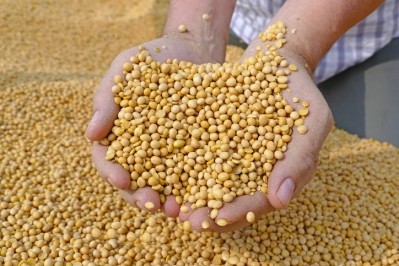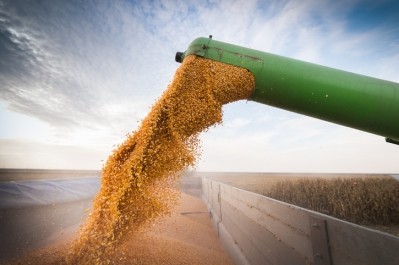US to see increase in corn exports: WASDE

The latest World Agriculture Supply and Demand Estimates (WASDE) report shows the USDA raising the level of US corn exports by 175m bushels, based on competitive prices, record-high sales and a drop in exports from Argentina.
Ending stocks were dropped to 2.127bn and the season-average price range was narrowed to $3.15- $3.55, the department said.
Globally, corn production is down in Brazil based on area planted, and yields in Argentina are anticipated to be reduced from heat and dry weather during February and March. However, South Africa and India are predicted to see increased production.
The USDA said the uptick in corn exports from the US is anticipated to offset the drop from Argentina. China is predicted to increase imports of corn and barley.
However, international corn ending stocks have been raised from last month based on Brazil, India and the EU.
The USDA lowered exports for US sorghum by 15m bushels from an expected drop in shipments to China. Feed and residual use is anticipated to increase.
Sorghum exports from Australia also are expected to go lower due to drought and a reduction in yield, the department said.
Soybean production
USDA forecasts that US soybeans will see increased crush, reduced exports and larger ending stocks from previous calculations. Crush was raised by 10m bushels and there has been an increase in soybean meal exports.
Soybean exports are down by 35m based on growth in production and exports from Brazil, the department said. Domestic stocks are projected to have risen to 555m bushels.
Average prices for soybeans remained consistent; however, soybean meal prices increased to a range of $325 to $355 – up $20 at the midpoint, the department said. “Higher soybean meal prices reflect the impact of sharply lower soybean production in Argentina,” it added.
Global oilseed production is projected to drop, and soybean production in Argentina is predicted down 7m tons based on dry growing conditions.
“Global oilseed trade for 2017/18 is reduced 1.2m tons mainly on lower soybean exports,” the department said. “Lower soybean exports forecast for Argentina, the United States, and Uruguay are only partly offset with a higher projection for Brazil.”
Global crush was increased. Ending stocks were reduced by 3.7m tons.
Dry weather
Regional areas of dry weather have raised some questions about potential yields for winter wheat and may be set to bring a dry start to the planting season in the US, said Tim Schnakenberg, extension agronomist with the University of Missouri.
“It’s been an exceptionally dry winter and it’s still dry as far as totals are concerned,” he told FeedNavigator. “We’re under par for moisture, but there has been some recent rain – things are looking a little better now.”
In addition to conditions in Missouri, the US drought monitor has been reporting multiple areas of dryness ranging from abnormally dry to exceptional drought across the US including through parts of the Southeast, Southwest, West Coast and Midwest.
The winter wheat crop was planted late as the state saw dry conditions starting last year, said Schnakenberg. “Wheat strands are late, and are thinner than normal – I have some concerns about the yield potential of the wheat crop this year,” he added.
The dry spell may allow feed grain producers access to fields for planting, he said. But, it is less clear at this point what it could mean for the upcoming growing season.
“We never want to go into a growing season with the subsoil moisture dry, because that starts us out on the wrong track,” he said. However, sometimes spring months can see an increase in rain to mitigate the dryer period, he added.
“If it is dry early on we might be able to get planted on time and put an herbicide on, but not have the yield potential [from] getting the root system developed as we go into summer,” he said.
Forage producers growing hay for cattle may have similar concerns, he added.
“They started feeding hay early because of the dry weather last fall,” said Schnakenberg. “We feel like we’re going to have to have a good hay crop this year and if we have a dry season in the spring that puts us behind the eight ball again.”
Wheat
For the 2017/18 marketing year, US wheat exports have been dropped by 25m bushels and ending stocks have been increased, the USDA said. There has been increased competition in the global export market.
“The season-average farm price is raised $0.05 per bushel at the midpoint of the range to $4.65 on NASS prices reported to date and expectations of higher cash prices for the remainder of the marketing year, reflecting the ongoing drought in the Southern Plains,” the department said.
Global supplies grew and exports increased, the department said. However, total consumption dropped and world ending stocks were increased by 2.8m tons.













